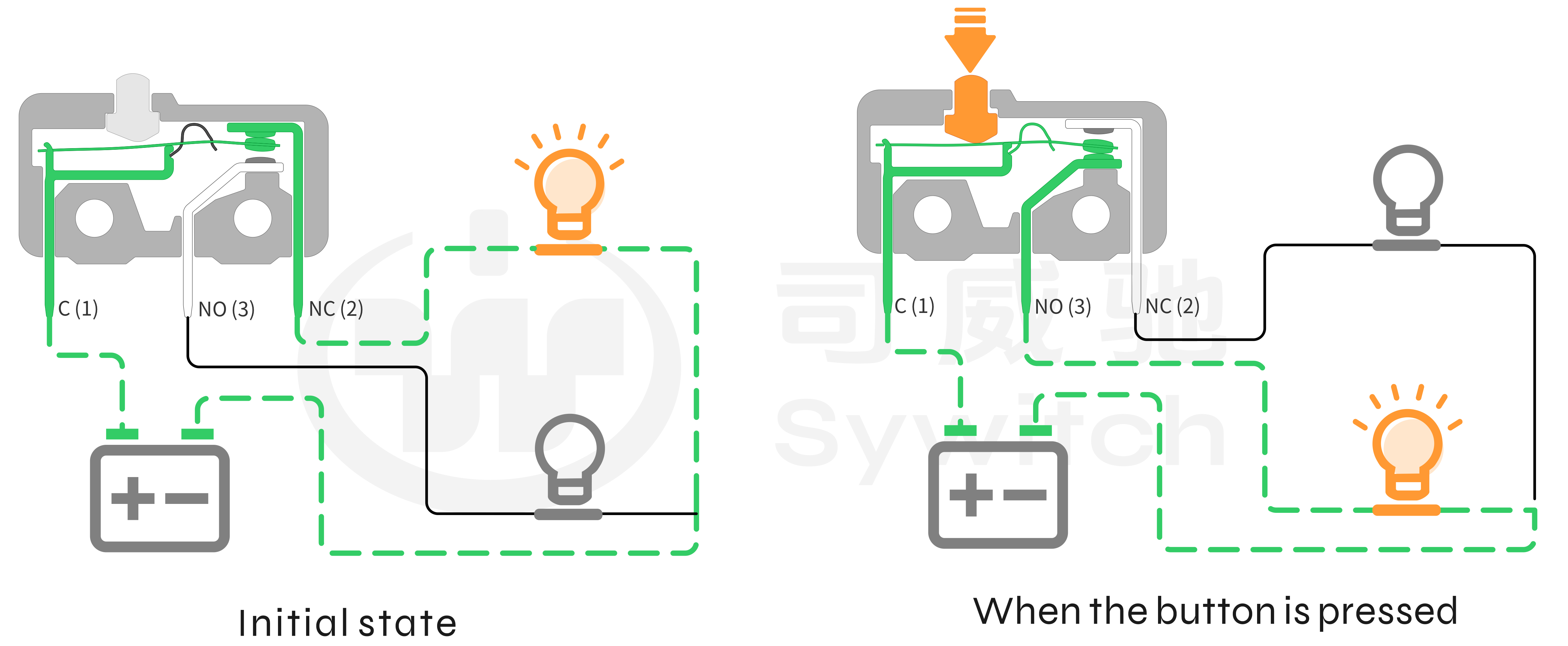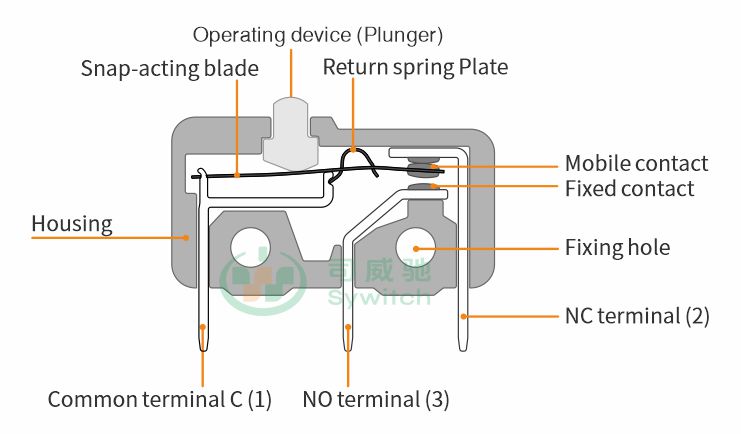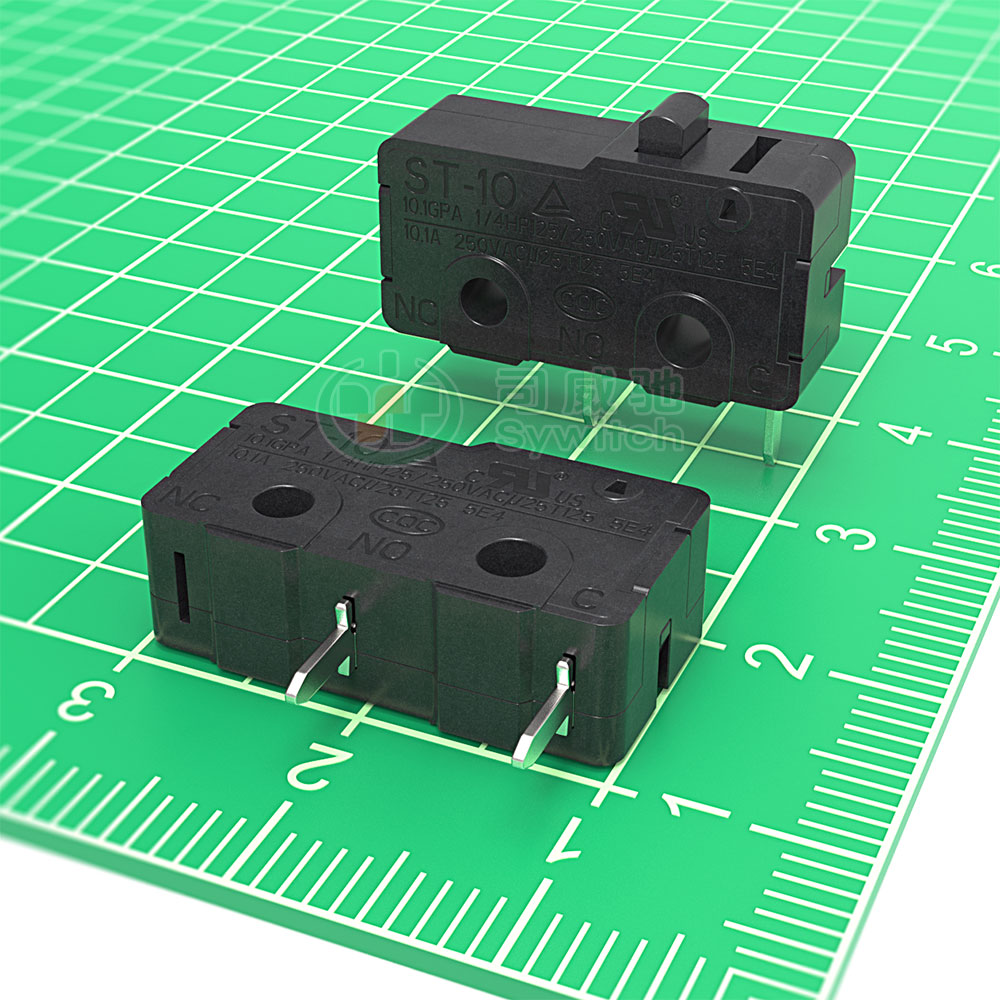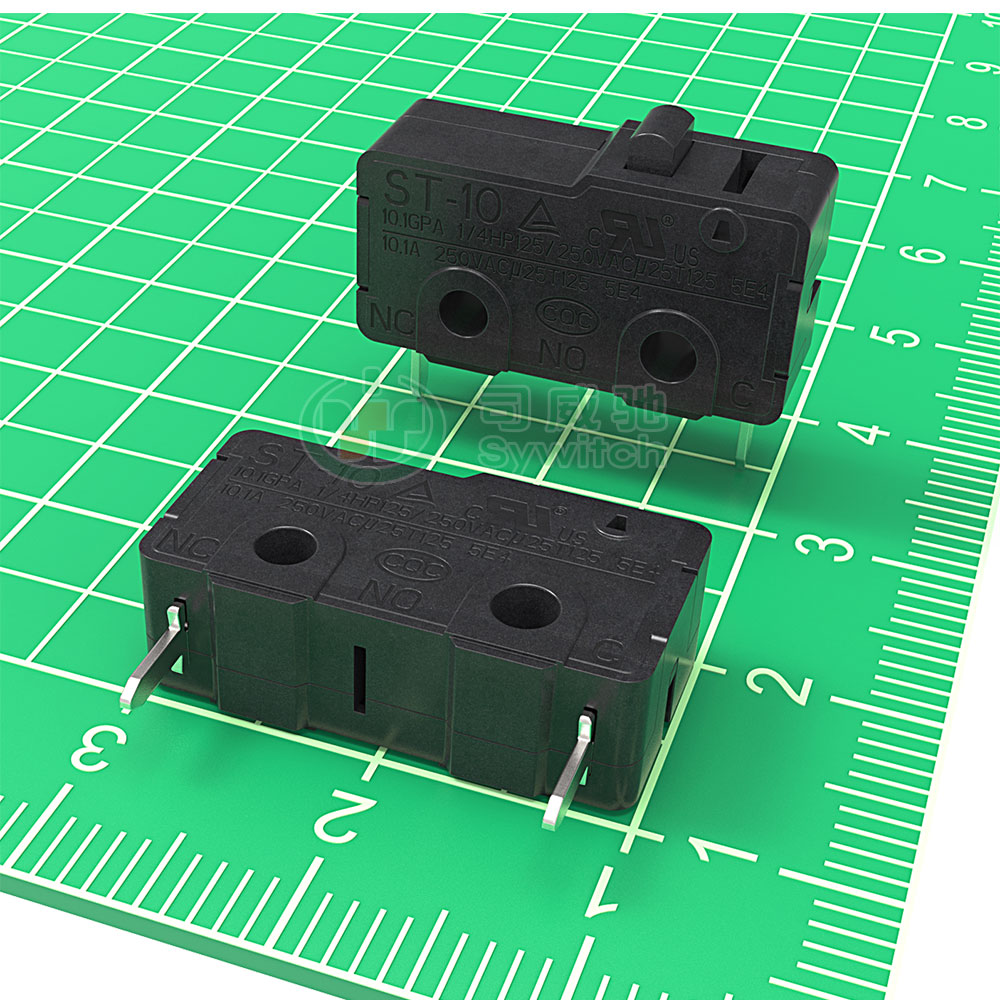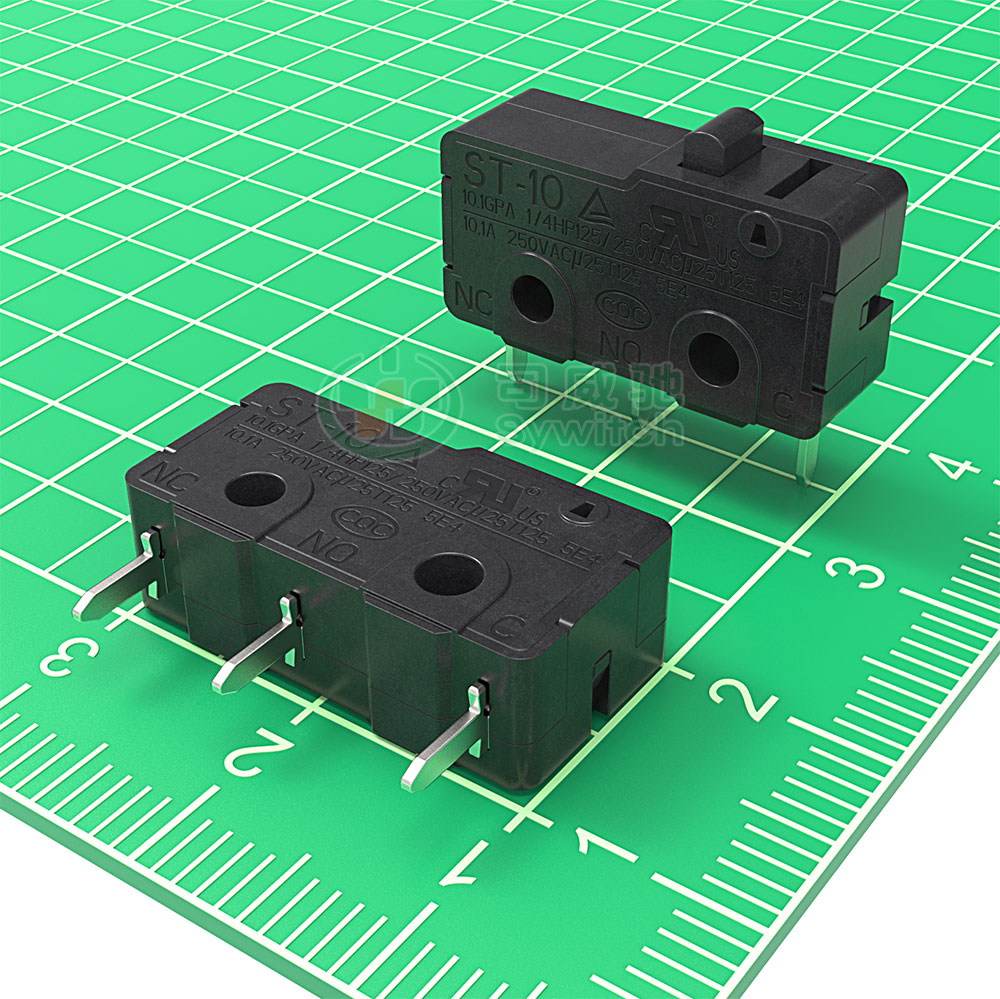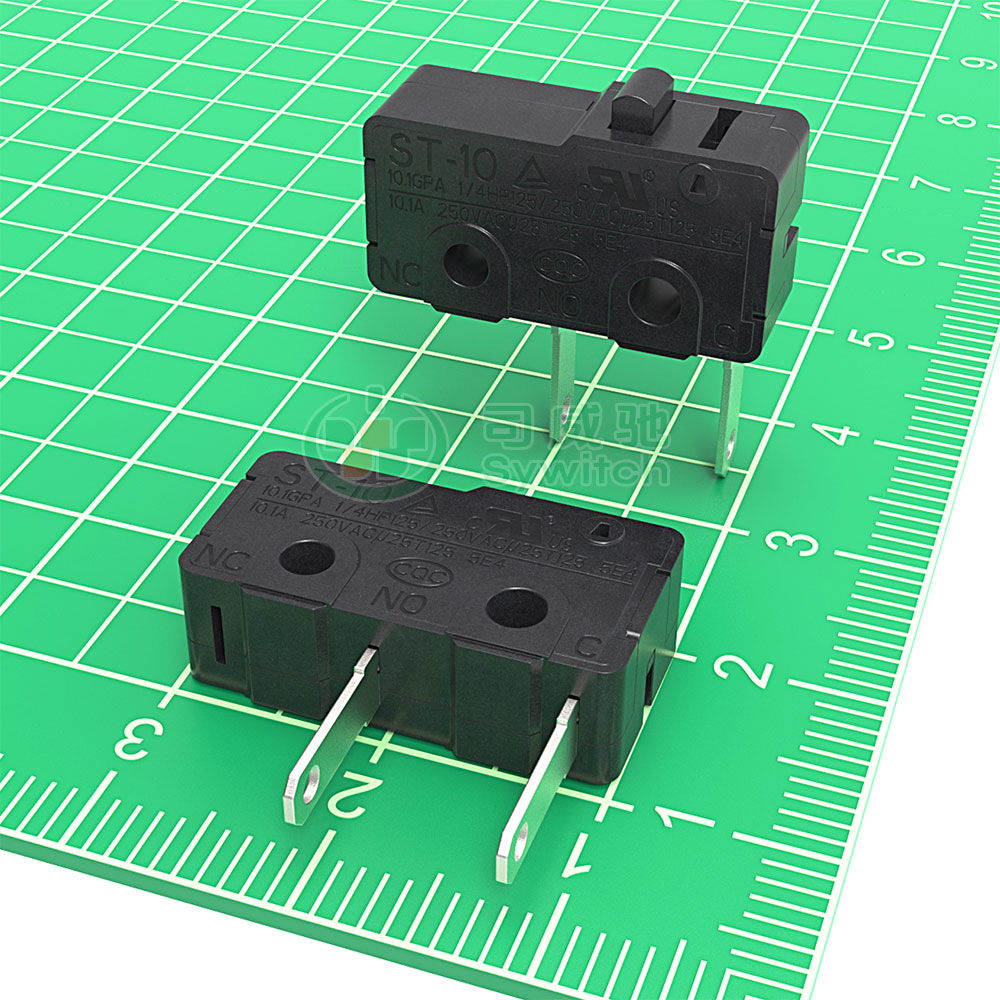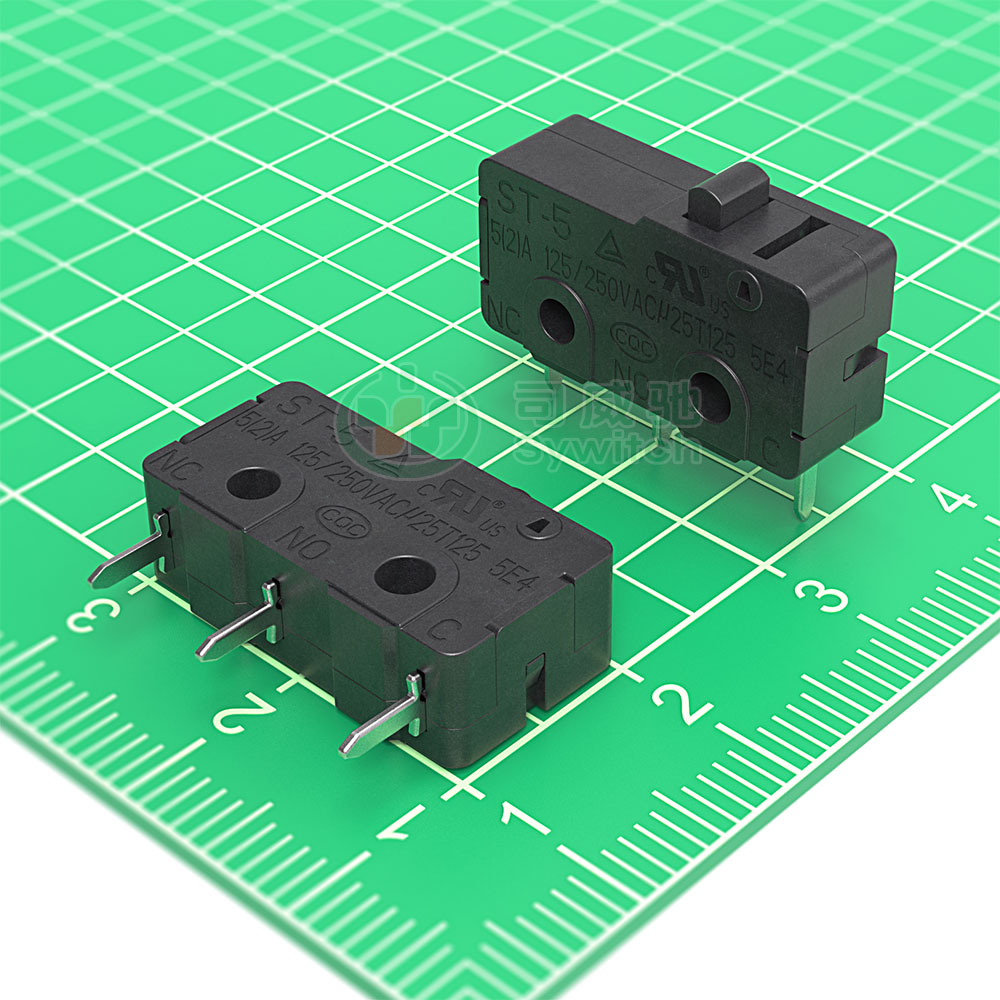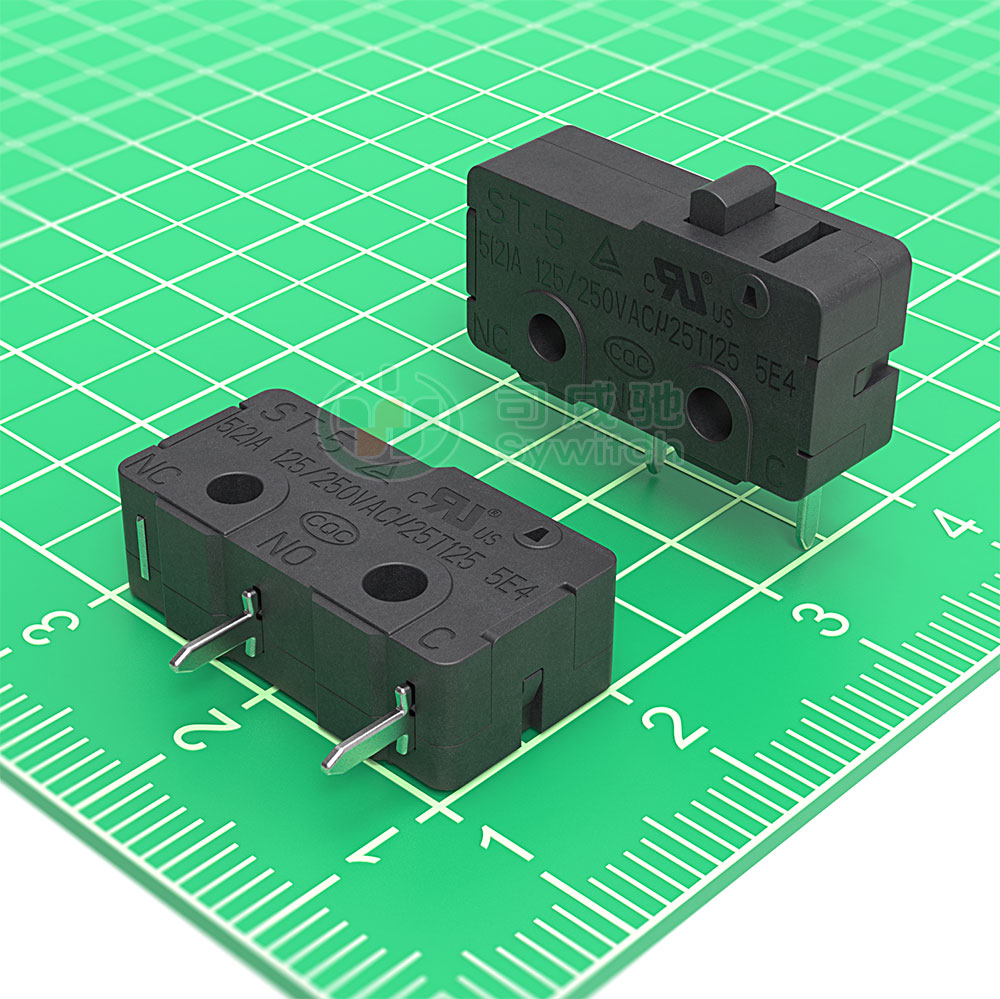A micro switch is a small mechanical switch, also known as a sensitive switch, quick-action switch, limit switch, or travel switch. It achieves the opening and closing of the circuit through a small contact point interval and a fast-acting structure, playing a vital role in the circuit control of electronic devices, control systems, and various instruments.
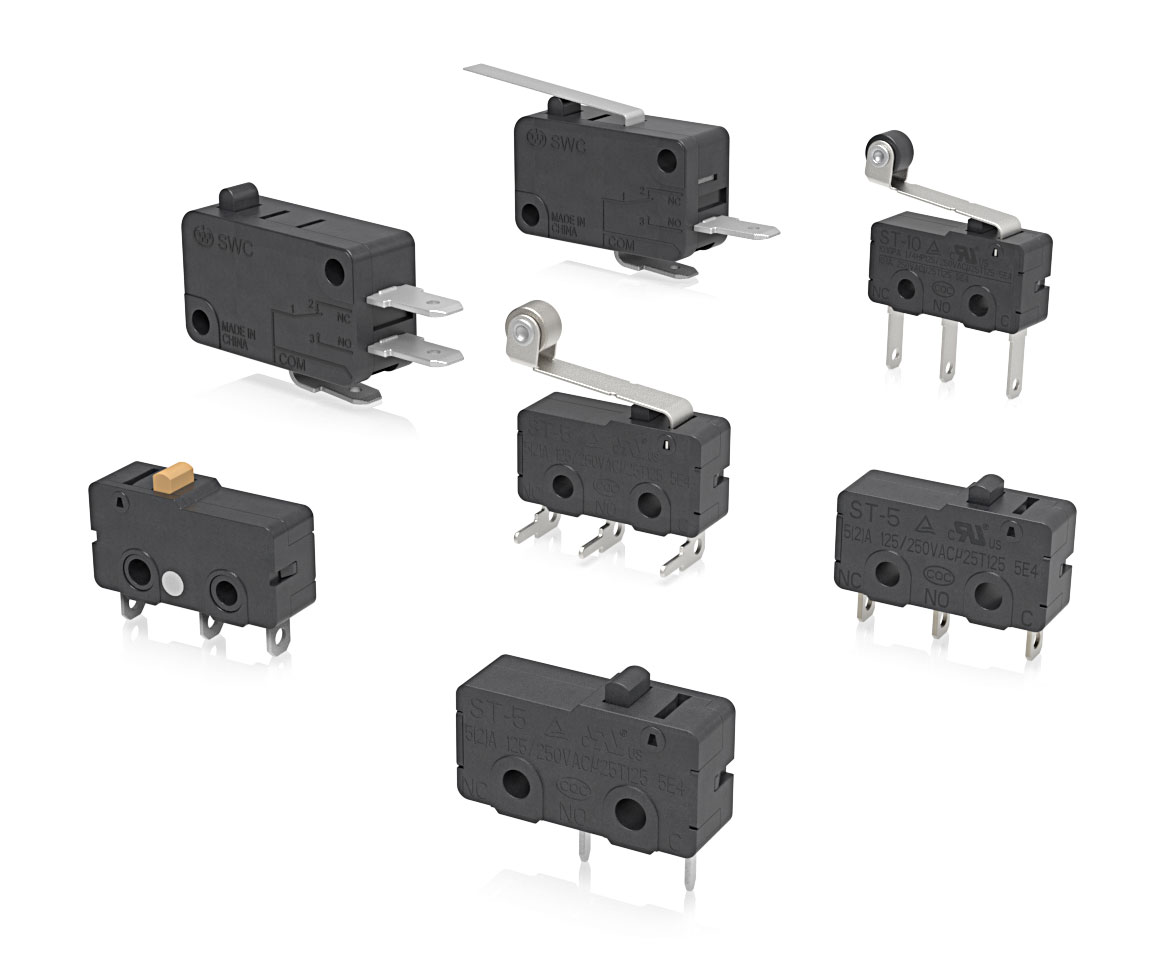
The micro switch controls the on-off state of the circuit through minute mechanical movements. When an external force acts on the button or actuating lever of the micro switch, the spring or reed inside the micro switch undergoes displacement or deformation, causing a change in the contact state between the contact points, thereby realizing the opening and closing of the circuit. When the external force is released, the spring or reed inside the micro switch resets, restoring the contact points to their initial state.
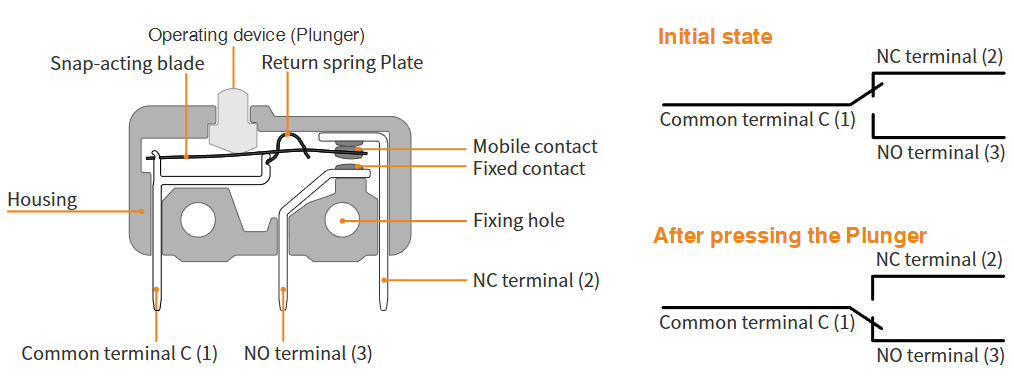
Based on the differences in working types, installation methods, and usage scenarios of micro switches, they are typically classified as follows:
By Operating Principle or Type: Normally Open (SPST-NO) Type, Normally Closed (SPST-NC) Type, Double-Throw (SPDT) Type.
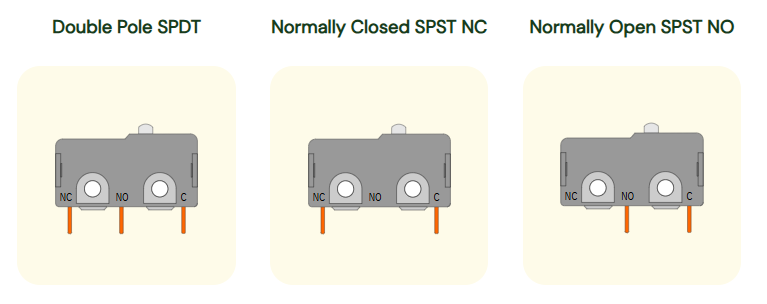
By Installation Method: Solder Terminal Type, Quick-Connect Terminal Type, PCB Terminal Type, Bent-Pin Terminal Type (Side Mount).

By Actuation Type:Plunger Type, Lever Type, Roller Type, Dummy Roller Type.

By Load Current: 1A Current, 2A Current, 5A Current, 10A Current, 16A Current.
By Voltage Rating: AC Micro Switch, DC Micro Switch.
By Reset Structure Type: Spring plate Type, Spring Type.
By Contact Point Type or Material: Needle Type, Rivet Type, Alloy Contact Point, Silver Contact Point, Gold-Plated Contact Point.
Micro switches are widely used in the control of many electrical appliances and mechanical equipment in daily life, and their main characteristics and advantages are as follows:
High Sensitivity: Micro switches are capable of generating triggering actions under very small forces or displacements, enabling the opening and closing of circuits.
Stable and Reliable: With a stable internal structure and high-quality materials for contact points and reset structures, micro switches ensure reliable operation and superior mechanical and electrical life.
Small Size and Lightweight: Available with various types of terminals and actuating levers, micro switches can be easily integrated and installed in various devices, allowing for flexible layout and installation options.
In conclusion, micro switches are an essential and widely used electronic component that not only controls the opening and closing of circuits but is also frequently employed as a limit switch and circuit switch in practical applications. By understanding the basic structure, types, working principles, characteristics, and application scenarios of micro switches, we can make more informed decisions when selecting the most suitable one for our specific needs. If you have any further questions, please feel free to contact us. Sywitch Technology is dedicated to providing you with stable and reliable micro switches.


